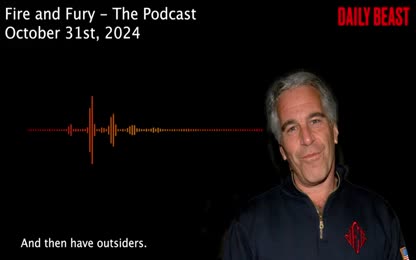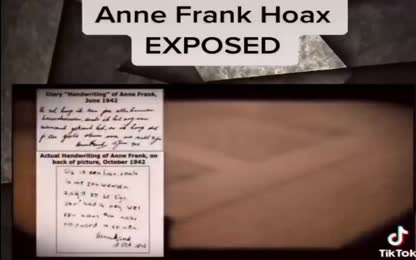Advertisement
Auschwitz Tour - in fact a secure place for ’Jews’ during War.
Actual photos as opposed to Jewish lies about ’Auswitch’ and ’death camps’, ’gas chambers’ etc.
- Category: Hitler / World War II,Holocaust / Holocaust History ,Hidden Knowledge,Truthers/Truth Community
- Duration: 13:55
- Date: 2022-10-30 17:15:01
- Tags: auschwitz, holocaust ww2 gas chambers jews
5 Comments
Video Transcript:
If you have arrived at this page, you have undoubtedly heard about Auschwitz and know what has been said about this concentration camp in the years of World War II. This presentation seeks to present only the physical properties of the camp, a virtual tour, if you will, to inform discussions about this important subject. In this way, we hope that all who see it will gain an appreciation of the hardships of everyday life endured there and the very human spirit that is evident in the scenes of daily life. The photos and documents in this presentation were, for the most part, obtained from so-called Holocaust memorial sites and from private collections. Most people came to Auschwitz by train with whatever belongings they could carry. They left behind their homes, lives, and other possessions along with their communities and beloved friends and family. With respect to Jews, who are the main group discussed in reference to the concentration camps, while all Jews in Germany were given the opportunity to offer to migrate to Palestine and other locations in the 1930s with their money and all possessions, many chose not to leave. Not everyone then went to the camps. Some Jews enlisted in the German army, a few rising to the high officer ranks. Others continued their lives as usual in Germany and in other countries. Auschwitz was a huge operation with more than one camp and many large buildings and major installations. The camp had an absorption building, presumably to process inmates on arrival, taking note of identifying information and physical characteristics. All inmates had to undergo, showering after the arduous journey, head shaving to remove a light which caused tythus and wear camp clothing. Inmates worked with camp guards and officers to welcome and process new inmates. As part of the camp's amenities, there was a facility that inmates could use for religious services and purposes. Here we also have a photo of the camp's common dance house. The familiar red-tiled roofs of the Auschwitz barracks are shown here. The camp was enlarged as its planned population grew. The black and white photo shows the new barracks and reconstruction. Inside each of the three levels had double or triple-decker bunks for inmates in separate men's and women's barracks. Auschwitz had a massive central heating facility for camp buildings. The central heating plant was constructed in 1941. Like any large community or town, Auschwitz required massive systems for sewage treatment and water purification. Here you can see the extensive piping that was eventually put in place along with canals, lawns, and other facilities to clean and transport water. Some of these systems match those in use today. Auschwitz had a working farm seen here in part on the bottom right. It also had a series of greenhouses allowing the cultivation of fresh cottons throughout the cold winter months in northern Europe. In the two left photos, a massive food storage facility is seen under construction in 1941. Inmates tended the farm, taken care of the crops they would later consume. They were also able to plant their own food, caring for those gardens themselves. In addition, the Auschwitz farm grew cock sagis, a relative of the dandelion plant, which contains latex. This was used instead of rubber to make tires at other war essentials as rubber was scarce during the war. The women in the upper left corner picture are working the fields of cock sagis. An agronomist in the middle photo on the right is seen here visiting the farm facility, accompanied by these Christopherson, a farmer and German officer who worked on this program of cock sagis. It was a model program at Auschwitz that other camps wanted to emulate. Also shown are a pigstie on the farm in the lower left and the interior of one of the green houses. These photos appear to show farm storage facilities for grain and perhaps water, and inmate is shown fowing the fields almost completely hidden behind the war courses. The camp bakery was an important building equipped with giant ovens. Brad was an important part of the camp diet to increase calorie intake in the face of little available protein. Inmates received a set amount of protein weekly and supersweetured at most meals along with coffee. Inmates doing heavy labor and pregnant women were to receive bigger food rations. The multiple chimneys on the first photo designated a camp kitchen. This Holocaust source says that there were 12 kitchens in the camp. There must have been many dining rooms as well and one is shown here. A photo from inside the women's barracks shows the casual nature of the interior. The camp complaints office is shown where inmates could express concern about any matter directly to the camp common dog. There was also a court on site and a jail for anyone who severely transgressed camp policies. Horses were an important part of life at Auschwitz, powering farm implements and transporting officers and visitors throughout the facility. There were inscriptions above the entrances to the stables. This one had some lines of an old folk song, The Prussian Horseman song. Here are the signs of the east and the border guards last post stand. Your hand on the palm of every rider shall be. Your noble horses grew from the homeland. Here we start to see more inmates at work. In this case, apparently moving food and barrels on carts. Inmates interacted with the guards and there were many female guards responsible for female inmates. Auschwitz was very much about work. The camps were surrounded by factories and the inmates were put to work if they were of age and able. Here we see men in the iron works. Inmates returning from their work day and a vehicle garage with tools laid out, presumably for repair work. Here is construction work on the Dow factory, 1941. The construction of the crop factory also in 1941. There must have been several buildings in this complex of the crop factory because each photo seems to show a completely different kind of building. The information on each photo was taken from official Holocaust Memorial website. Here are workers doing assembly and electronics work at the Seamons Brobeck factory and the Seamons Airplane Factory. The inmates' labor was crucial to the war effort for Germany. With all its working age men off to war, the inmates clearly filled a gap in wartime production requirements. As you can see in the top right, the inmates are making rifles at the crop factory. There were 3,000 babies, born at Auschwitz and all lived to liberation. There were nursery and daycare facilities with nurses caring for infants and children while their mothers were at war. While there were a few photos of children at Auschwitz, the ones available showed children robust and healthy, including at the end of the war as shown in the photo on the right, which was taken at the camps liberation. Auschwitz had extensive healthcare facilities, a hospital is shown on the bottom right with an interior shot top left. Inmate care was divided by type of condition, with infectious diseases isolated and separate wards for various kinds of ailments and conditions. The bottom left photo shows some of the doctors needing informally. The two other photos show a storage room for medical equipment and clinical treatment room. Auschwitz had a fully operational operating theater and an isolation room for infectious diseases. More of the camp doctors are shown here, for particularly difficult cases, experts were brought in. For medical facilities included a laboratory, an x-ray machine, and a dental office. Auschwitz nurses are also shown. Finally this was mandatory at Auschwitz to prevent outbreaks of deadly tythus. In the top left photo, inmates are shown wheeling racks of clothing out of disinfection chambers where zyclon v and steam were used to kill any lights and their eggs on clothing and other camp materials. The huge laundry boilers on the top right used heat to destroy pathogens on sheets and towels and other materials. The sign on the wall of the bathroom bottom left says, dirtiness is the basis of every disease. Pretty blunt, but I guess it needed to be, as shown on the bottom right, Auschwitz had modern plumbing. Auschwitz had a grand theater equipped with a grand piano. Musical instruments were provided to inmates along with other facilities and tools to create enjoyable performances of dance, theater, and song. There were events for children as well and one forward inmate who recalls painting a mural of snow white and the seven dwarves for the children in the theater. There may have been up to 16 Auschwitz orchestras playing classical jazz, blues, ragtime, and other types of popular music. Here a band plays outdoors on a winter day and orchestra practices outdoors and an orchestra puts on a full performance on a Sunday, apparently for SS. Auschwitz had a share of famous people living there, including jazz musician Louis Bennett, a group called the Kubu Orchestra from Cuba and the Ovid family, a performing family of seven little people all of whom survived the war. Another famous Auschwitz resident was French Jew Alfred Nakash, an Olympic swimmer. Whenever possible he put on swimming displays in the Auschwitz pool. He wrote about his experiences at Auschwitz after the war. The Auschwitz pool was made available to inmates who were considered high performers, it featured a driving platform and racing blocks. Sports were featured at Auschwitz along with other fitness activities. This fencing match appears to be a major affair with lots of spectators. The prisoners of war housed in separate facilities on the camps grounds for the football or soccer teams. In the later years of the war inmates playing soccer. We're often joined by the guards. It was said by Southern Mace that the guards were more relaxed in the final months of the war as it became clear Germany was losing. Because inmates were free to roam around the camp there were romances and marriages. There were celebrations of major holidays as well. Here we see a Christmas tree by a camp. When inmates wishing to maintain or expand their knowledge and intellectual skills had access to a library on the camps grounds as well as to Auschwitz University to which local professors were invited and indeed came to lecture. The facility pictured here looks well used indeed. Inmates could receive up to two letters or postcards monthly. The first postcard they sent out as shown here listed the camps rules. All correspondence had to be in German and clearly written. Players were subject to a mass maximum length and could contain no inserts. However, food packages could be received in any quantity and size at any time. As Auschwitz was an internment camp, prisoners were released at the end of their sentence. Here is shown a release card. And of course when the war ended everyone was free to leave. The inmates generally had to go to displaced persons camps until they could find a country and a home to go to.










 Donate
Donate







